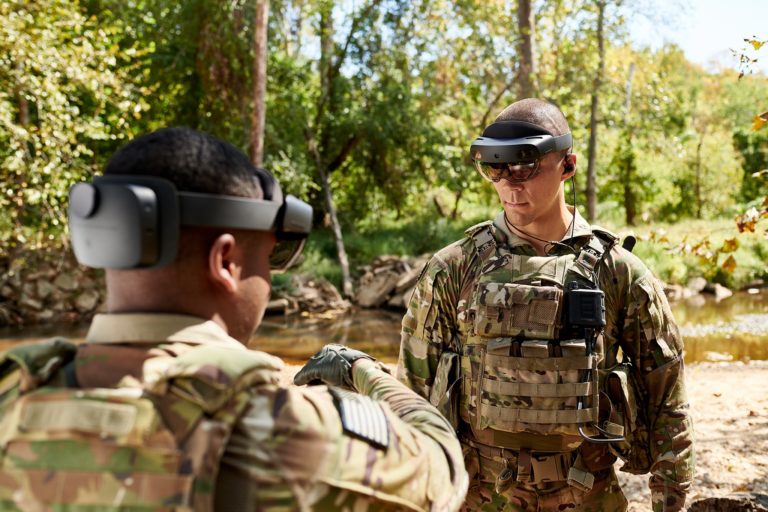
One of the biggest news items from the past few weeks in the AR sphere is the U.S. Army’s renewed contract with Microsoft. As we covered recently in Spatial Beats, it’s doubling down on AR, including combat-optimized HoloLens 2 units for battlespace awareness and effectiveness.
But what is the financial impact of this deal? It’s been reported that the price tag is $22 billion, but how does this stack up to current enterprise AR spending? Similarly, how does it amplify the AR market in the aggregate? We’re crunching the numbers for this week’s Data Dive.
First, as background, the deal calls for 120,000 units of Microsoft’s Hololens-based IVAS design. Short for Integrated Visual Augmentation System, it enables battlespace awareness, target acquisition, identification of friendlies, night vision, and thermal imaging, among other things.
The deal’s size effectively makes it the largest in AR history. It follows the 2018 contract with Microsoft for $480 million over 2 years. This not only pumps large sums of cash into the AR ecosystem, but it’s validating for the industry that the Army is doubling down. AR is working.
With that scene-setting, let’s dive into the numbers.
Data Dive
When gauging this deal’s impact on AR spending, we can put $22 billion into perspective. If we look at enterprise head-worn AR market sizing from our research arm, ARtillery Intelligence, annual hardware and software spend is projected to reach $2.05 billion in 2021 (without this deal).
It’s also important to note that the Army’s $21.88 billion contracts is spread over ten years. Because the deal’s accounting and amortization details aren’t public, let’s assume for the sake of this exercise that it’s distributed evenly. That would make the deal worth $2.19 billion per year.
Given the above $2.05 billion estimate for 2021 enterprise AR spending, that would mean that the U.S. Army deal more than doubles the size of the market (2.1x). Again, this figure is built on assumptions of the deal’s amortization structure, but it still puts things more into perspective.
For example, if the Army’s AR spending is indeed distributed evenly, it will have a smaller share of the overall AR spending pie as that denominator grows over time. Indeed, enterprise AR spending is projected to accelerate over the next five years as more enterprises realize ROI gains.
45x
Other notable points about this deal include the fact that the U.S. Army is much more than “doubling down” on AR, as phrased above. This deal represents a 45x delta over its previous contract with Microsoft. At the time, that was similarly the largest AR deal to date.
When looking at vertical breakdowns of enterprise AR, this deal likewise vaults military spending further into the lead. It already had the top spot, due to the U.S. Army’s previous contract with Microsoft. Other leading verticals include the three A’s: auto, aviation and aerospace.
But the elephant in the room is that the above AR spending projections will need to be reworked given this development. That’s the name of the game in market sizing, especially when tracking early and uncertain markets. It’s a moving target that requires ongoing course correction.
Meanwhile, the above exercise is telling for the relative size of this U.S. Army contract, and how it grows the overall market. We’ll keep our eyes open for more course-changing deals in the wild world of AR. There will be others to come as the AR market shifts around and takes shape.

